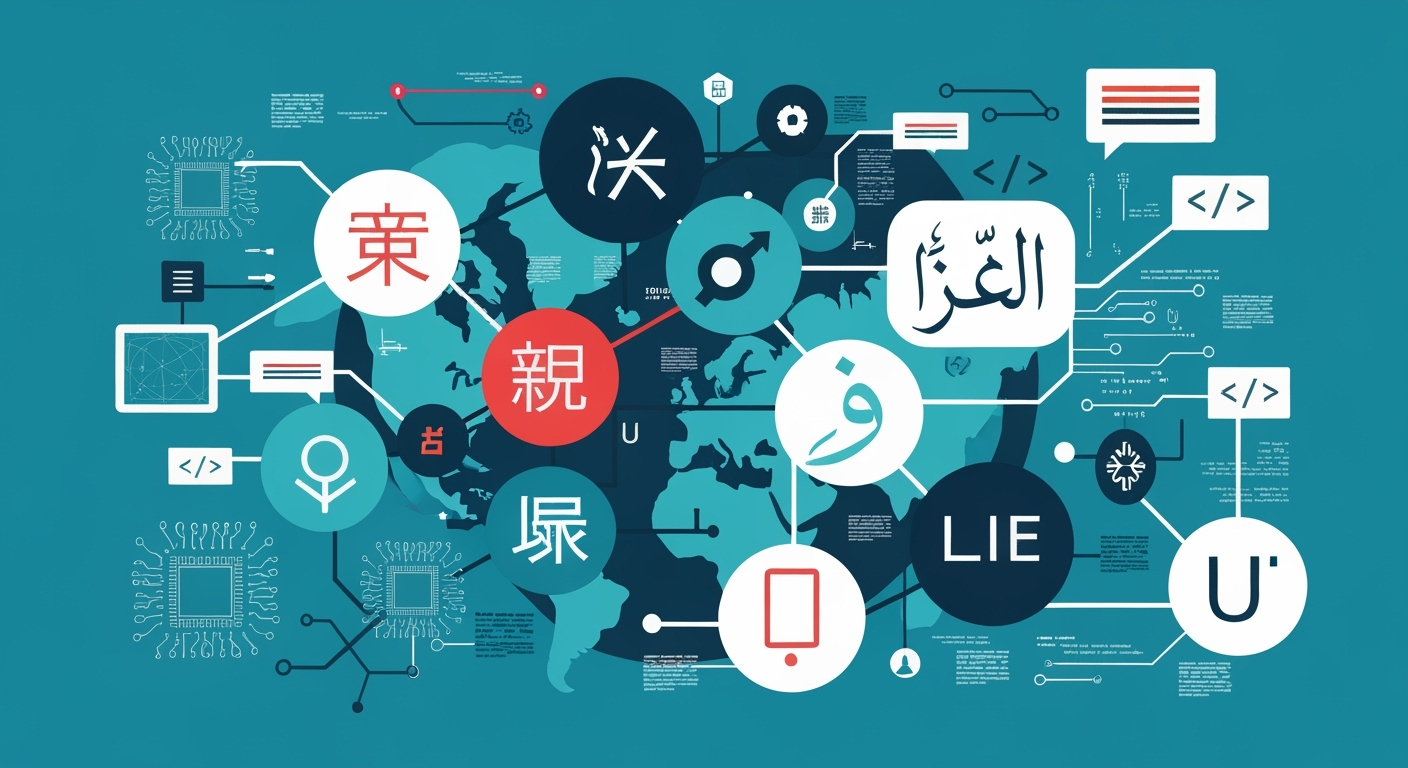Why Localization Is Your Global Growth Engine
<
Beyond Borders, Beyond Language
It's incredible, isn't it? The world feels smaller than ever, yet the nuances of human connection remain as vast and intricate as always. As someone who has spent decades building bridges across continents through technology, I've seen firsthand that true global success isn't just about having a great product or service. It's about understanding people. It's about speaking their language, literally and figuratively. It's about localization.
For me, localization isn't just a buzzword. It's the secret sauce, the invisible hand that transforms a good idea into a universally loved solution. It's the difference between a product that simply exists in a market and one that truly thrives there. We're talking about adapting to language, culture, and even the subtle work habits that define different regions. Trust me, it makes all the difference.
In my journey leading IndiaNIC, I've had the privilege of working with incredible teams and clients from every corner of the globe. Each interaction has reinforced one undeniable truth: neglecting localization is like trying to sell ice cream in Antarctica – you might find a few takers, but you're missing the vast majority.

Culture Is Key
Think about it. We build applications, platforms, and digital experiences that are meant to integrate seamlessly into people's daily lives. But 'daily life' looks very different whether you're in Tokyo, Toronto, or Timbuktu. A user interface designed with Western conventions might feel completely alien to someone in a different cultural context. Colors, symbols, gestures – they all carry different meanings. Ignoring these details is a direct path to user frustration and, ultimately, market rejection.
Story time: I remember working with our client, Michael from Dubai, on a new e-commerce platform. Initially, they had some concerns about the checkout flow. Our team, led by Jigar from Ahmedabad, quickly identified that the initial design, while perfectly functional in Europe, didn't account for the common payment methods and trust signals prevalent in the Middle East. We also adjusted the visual hierarchy to respect right-to-left reading preferences common in Arabic-speaking regions. It wasn't just translation; it was a complete cultural reimagining of the user journey.
The results? Michael's platform saw a significant boost in conversion rates, simply because it felt 'right' to his local audience. It spoke their language, understood their preferences, and built trust. What cultural nuances have you seen make or break a project?
Beyond Words: Work Habits
Localization isn't just about language or even cultural symbols. It extends to the subtle, yet powerful, realm of work habits and expectations. This is where understanding your target audience's daily rhythm, communication styles, and even their approach to problem-solving becomes paramount. It influences everything from how support tickets are handled to the features prioritized in a product.
The funniest client feedback we ever got was, 'Your app is great, but it tries to be too helpful. I just want it to do what I tell it, not suggest what I *should* do!' Turns out, some cultures prefer directness over proactive assistance. Lesson learned: even 'helpful' can be culturally relative!
For example, in some cultures, direct, concise communication is valued, while in others, building rapport and context is essential before getting down to business. Imagine an app that pushes notifications at a frequency considered intrusive in one region, but perfectly acceptable in another. Or a project management tool that expects constant, synchronous updates from a team used to more asynchronous, self-paced work.
Here's a funny one: Our development team, particularly Rohan from Pune, was once stumped by a bug report from our client, Anna from London. The report simply said, 'The thingy is wonky.' After several clarifying calls, we discovered 'thingy' meant a specific UI element, and 'wonky' meant it wasn't aligning perfectly. It highlighted how even English varies across geographies, and how critical it is to establish clear communication protocols.
It's about anticipating these unspoken expectations and designing for them. It’s about building flexibility into your solutions. What's a common work habit in your region that might surprise someone from another part of the world?
Building Global Teams
This principle of localization extends internally too, to how we build and manage our own global teams. At IndiaNIC, we have brilliant minds collaborating across time zones and cultures. From our core team in Ahmedabad to Hyderabad and Indore, they're constantly interacting with clients and colleagues from Seattle to Singapore, São Paulo to Sydney.
We've learned that fostering an environment where everyone feels understood and valued, despite geographical distances, is crucial. This means adapting our communication tools, scheduling meetings at times that are fair to everyone, and encouraging cultural sensitivity. It’s about recognizing that a 'late night' for one team member might be a 'mid-morning' for another.
Our team in Ahmedabad, led by Brinda, often works with clients like Jennifer from Sydney. Brinda ensures that even simple things, like how project updates are phrased or how feedback is delivered, are tailored to Jennifer's communication style, bridging the cultural gap and making collaboration feel effortless. This internal localization strategy empowers our teams to deliver exceptional results globally.
The ROI of Empathy
Ultimately, the power of localization boils down to empathy. It's about putting yourself in your users' and clients' shoes, wherever they may be. It's understanding their unique context and tailoring your offerings to fit perfectly. This isn't just a nice-to-have; it's a strategic imperative that drives tangible results.
From increased user engagement and higher conversion rates to stronger brand loyalty and smoother international collaborations, the return on investment for thoughtful localization is immense. It transforms your global presence from a mere footprint into a deep, meaningful connection.
So, as you look to expand your reach or refine your existing global strategy, ask yourself: are you truly localized? Are you adapting to the unique language, culture, and work habits of your audience? Because if you are, you're not just building a product; you're building a global legacy. I’d love to hear your thoughts on this – what’s been your biggest localization win or challenge?









